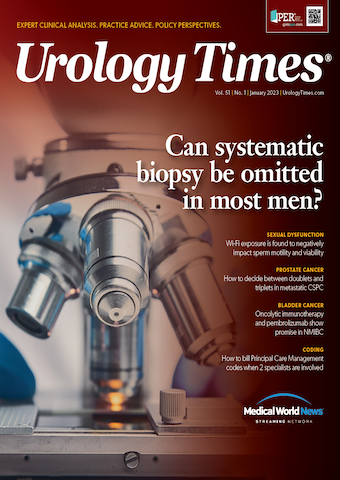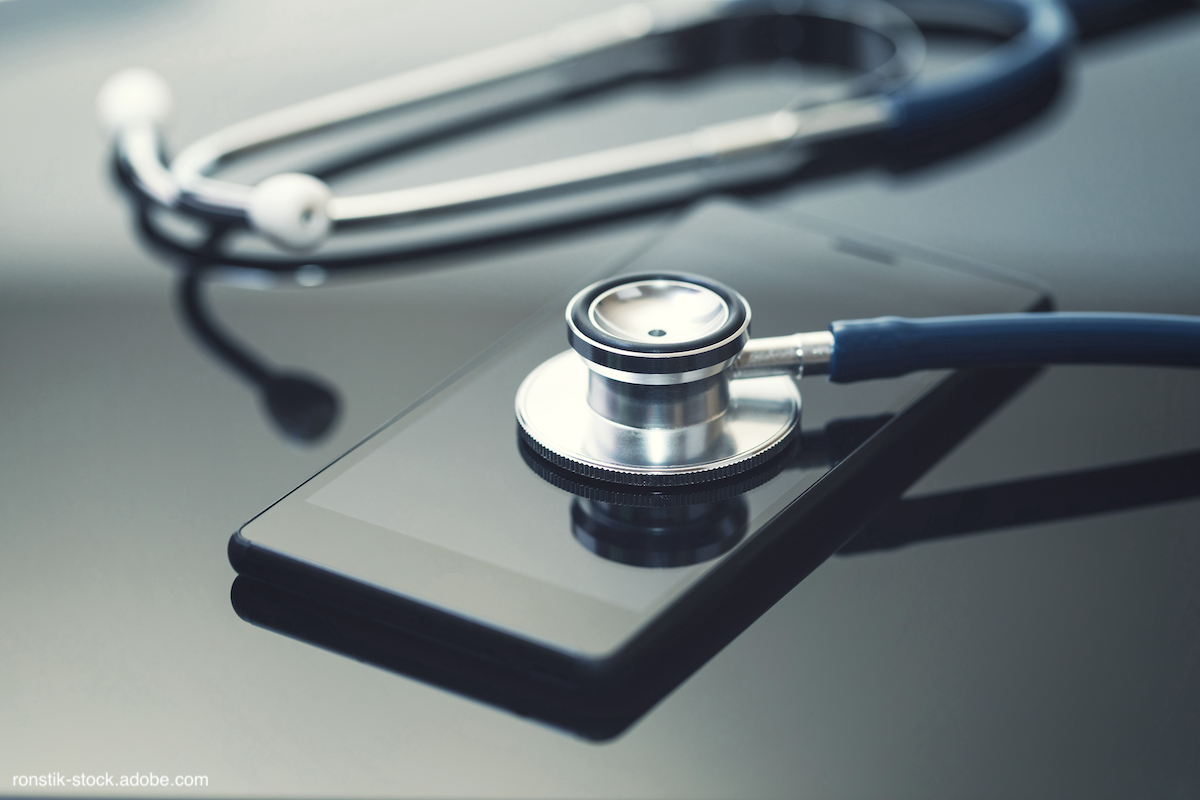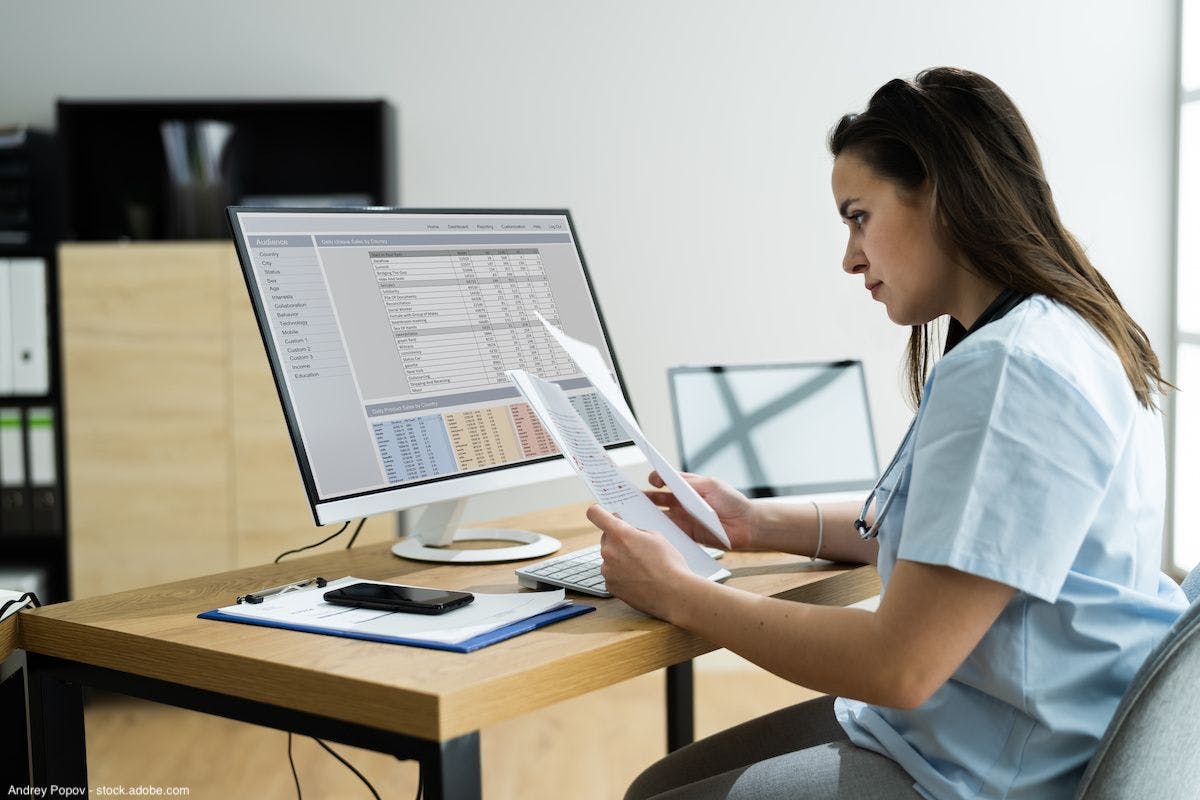Publication
Article
Urology Times Journal
Post-transperineal biopsy pain appears manageable for patients
Author(s):
John Myrga, MD, discusses recent findings on levels of pain, anxiety, and embarrassment for patients undergoing a prostate biopsy with a transperineal approach versus a transrectal approach.
In this interview, John Myrga, MD, discusses the findings of his recent study scheduled to be presented at the Northeastern Section of the American Urological Association Annual Meeting that looked at 2 different approaches to prostate biopsy. The study compared a transperineal approach with a transrectal approach, finding that although pain differed during the procedures, they were comparable immediately after.1 Myrga is a urology resident at the University of Pittsburgh Medical Center (UPMC).
Please describe the background for the study.
A lot of urologists out there continue to do transrectal biopsies as their primary method of prostate biopsy. However, a lot of recent data have come out that transperineal biopsies are likely safer, with lower sepsis rates, as well as offer better access to certain areas of the prostate. One of the big things that's been a limitation for introducing transperineal biopsies into the community setting has been a concern for patient pain and patient pain outcomes. A lot of people will have to do these under sedation, and some people must even do these in the OR because of the reported increase in pain with transperineal biopsies as compared with transrectal biopsies. So, we wanted to show our experience using an office-based transperineal biopsy with local numbing medication via lidocaine to look at our patient population and see what their levels of pain, fear, and anxiety are when they come into an office-based transperineal biopsy.
What were some of your notable findings? Were any of those surprising to you and your coauthors?
We ended up having 287 patients total, and about 50 of them were transrectal biopsies and about 240 were transperineal, just to get an idea of how our study compared. What we did find was kind of in line with the literature that a transperineal biopsy, right during the time of biopsy, has higher levels of patient-reported pain. That was significantly higher at about 3.5 out of 10 on a visual analogue scale for transperineal compared with a 1.7 out of 10 for transrectal population. I think what was interesting for us is when you then interviewed them immediately following the biopsy, those levels go back down. Transperineal is .6 out of 10, and transrectal is .4 out of 10. So yes, these transperineal biopsies are more painful right in the moment, but immediately following that, these patients are comfortable. I think that's important to note, and it's important to counsel patients that this might be more painful in the moment, but once that numbing medication sets in and you're in the chair right after the procedure, we can pretty much call these equivalent.
Also, interestingly to me, when we look at levels of embarrassment and levels of anxiety, these were also a little bit higher in the transperineal vs the transrectal population. I think that's 2 interesting areas; I thought they would kind of be equivalent, as they really are similar approaches. But I think that's something we can think about as we're putting this in an office-based setting. Patients are still anxious and a little bit fearful about this transperineal approach compared with transrectal. Maybe we can do a little bit better job counseling, or maybe we can do something better during the biopsy itself to make our patients feel more comfortable.
Is any further research on this topic planned? If so, what will that focus on?
I think we have a lot more to look into in this setting, because we really want to expand the use of transperineal biopsies so people can be out of the OR and not have sedation for these. Even with our department, we're looking at other methods and other ways we can alleviate pain and distract patients, whether that be techniques for relaxation, how we inject our numbing medications, or how we counsel patients for these procedures. I think a lot of that is left to be done, and that's something that we're certainly working on, and a lot of other places are as well. When we try to shift these from a sedation OR procedure to the office to make our patients feel more comfortable, that's something that we're still working on here. We have some interesting ideas coming along.
Based on your findings, are you likely to change anything about your own clinical practice? Why or why not?
As a urology resident coming through training, seeing a lot of this change has been very interesting. As a lot of us do, we train different places with different techniques. Having done a lot of transrectal biopsies at other sites and doing transperineal biopsies working with my attendings here, you see the benefits for these patients. Once you see 1 or 2 patients who come in septic after a transrectal biopsy, you see how that changes their course and their perception of getting what was sold to them as a simple biopsy. I do think that this would make me more likely, when I go to the practice down the road, to want to do transperineal biopsies with all of these adjuvant things whether that be the lidocaine or stress and relaxation techniques. From what I've seen, I think patients do tolerate this well. It's something that I'd like to implement in my practice and hope to work on these other ways to make it more comfortable, less anxiety-provoking, and less embarrassing for patients.
What is the take-home message for practicing urologists?
The take-home message is that transperineal biopsies, although they may be more painful in the moment, long-term for our patients as well as short-term, right after the procedure, they're not noticing significantly more pain compared to transrectal biopsy patients. This really gives evidence for a push that we should continue to promote transperineal biopsies, which as we know, have a lower rate of sepsis and allow us to get better access to certain areas of the prostate in the outpatient setting. That's an important takeaway from this, and we can counsel our patients appropriately on that as well.
Is there anything else that you would like to add?
The next steps are important here. There are a lot of technologies and techniques that we can use for patients in this setting. When we think about all the other office-based procedures we do, such as transrectal biopsies and vasectomies that are done in-clinic, I think that technology can play a big role in these. Whether that be simple as a patient selecting their own music, to using augmented reality and TV as visual media to distract patients, I think that has a big role in making more patients comfortable in office-based procedures. Especially around the country as OR time and procedure time is going down, it's getting tougher to get these patients scheduled in that setting. Another interesting point to consider is there's a need to push these into an office-based procedure. And our patients like it; they like to go home the same day and to drive themselves to and from the appointments.
Reference
1. Myrga J, Erpenbeck S, Sharbaugh D, et al. Presented at: 74th Annual Meeting of the Northeastern Section of the American Urologic Association, Inc. October 27-29, 2022; Charlotte, North Carolina. Poster 22. Accessed October 25, 2022. https://nsaua.org/meetings/upcoming-meetings/schedule.aspx

Newsletter
Stay current with the latest urology news and practice-changing insights — sign up now for the essential updates every urologist needs.




























